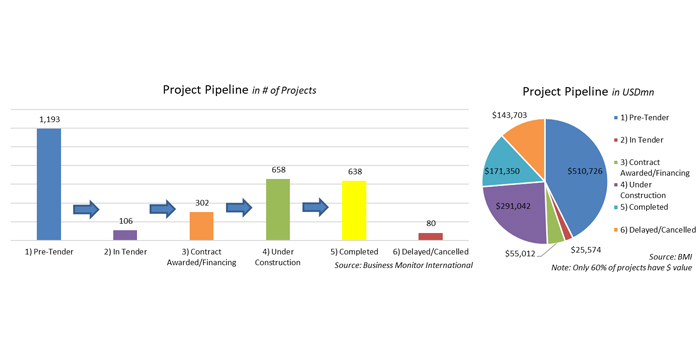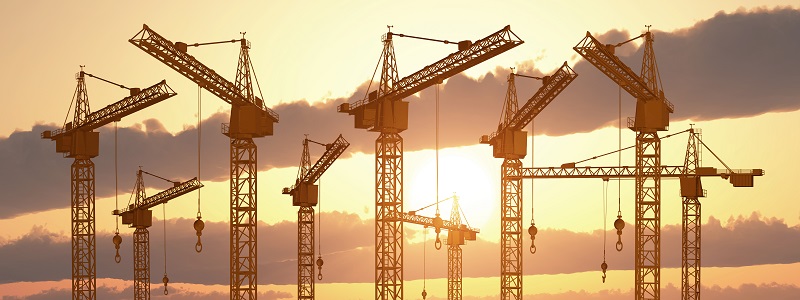admin | 29/04/2019
With over 3000 projects under way, Latin America is a region with many opportunities for the development of the construction sector. But these large-scale works, beyond their very scope, involve a series of risks that would be practically impossible to assume without the participation of the insurance sector, which makes it a key figure for progress.
The contribution of infrastructure to a country’s development is indisputable. While economic growth provides a state with the resources to finance its investment in the construction sector, infrastructure improvements encourage economic activity through their multiplier effect, and boost productive potential for the future.
Infrastructure networks for transport, energy, telecommunications and drinking water supply services constitute an essential element for the integration of a country’s economic and territorial system, enabling connections and commercial activities at both national and international levels.
A review of LATAM’s most relevant projects in 2019
At present, there are a large number of projects being defined or under tender in the region. So much so that the Association of Equipment Manufacturers (AEM), which closely follows the changes of this industry, considered the existence of approximately 3,000 projects as of June 2018, of which around 40 percent were in the preliminary bidding phase.
Chart 3: Project portfolio in Latin America as of June 2018

Source: Association of Equipment Manufacturers (AEM)
Due to their technical complexity and what they will mean for the development of the area in which they are located, the following projects can be highlighted from the current portfolio of existing projects:
- Central bioceanic railway corridor
This project will link the port of Ilo, in Peru, with the port of Santos, in Brazil. Four countries in the region (Peru, Brazil, Paraguay, and Bolivia) will see their trade routes optimized thanks to the new connections provided by this megaproject, involving an estimated investment of billion.
- Colombia Ferropista
This is a multimodal cargo transport system project, located in the heart of Colombia, between Ibague and Armenia, just 300 kilometers from Bogota. It will integrate a 55-kilometer-long section of railroad combined with a 44.2-kilometer tunnel. The investment, which will be made through a public-private partnership system, will involve funds of .1 billion.
- Lima subway line 2
With an expected completion date of 2022, line 2 of the Lima subway will run through the city in an east-west direction, with 27 stations and extending over 27 kilometers. This is a 100% automated project and will incorporate driverless train systems. The planned investment totals to .5 billion.
- Bogota subway
The Bogota subway project is located 280 kilometers from the Ferropista. BIM methodology has been implemented in its development. Its first line it will have a total of 16 stations, and a total of .35 billion has been calculated for its planned investment.
- Agua Negra binational tunnel
These are two tunnels, both going in opposite directions, that will cross the Andes at the Agua Negra border crossing, connecting Argentina and Chile. This connection would not only enhance trade between these two countries, but would also facilitate trade to the Pacific Ocean of an important region of Argentina. Its total investment is ]
.6 billion.
- Costanera central highway
Project planned to be completed by 2020, currently in technical prequalification phase. It will extend over of 22 kilometers and have 3 lanes in each direction of traffic that will considerably improve traffic circulation in Santiago de Chile. The estimated investment for this project amounts to ]
.18 billion.
Other relevant works that are to be tendered or that are in the construction phase include the Cerro Dominador Solar Thermal Power Plant in Chile, Parque Lagoa dos Ventos in Brazil, the Huancayo-Huancavelica railroad project in Peru, La Línea tunnel in Colombia, and the Aconcagua Bioceanic Corridor.
The role of the insurance sector as a promoter of construction

It is natural to consider that construction and infrastructure projects, beyond their scope, carry a risk in themselves due to the large number of agents and processes involved.
Therefore, undertaking a project would be practically impossible without the insurance sector, which acts by mitigating and controlling the various risks involved in the undertaking of a work, among which we can mention:
- Risks related to the non-execution of works. Those that can affect the delay or non-completion of works.
- Risks related to economic factors. The economic situation of a country or region can generate uncertainty for the participants in a project, directly affecting their participation or the tariffs that the participants charge for it.
- Risks related to technical factors. Those that materialize when the technical studies of feasibility of the project turn out to be incorrect.
An example of this type of risk could be the erroneous assumption regarding the quantity or quality of minerals extracted in a mining project, or the lack of capacity of the project to produce the quantity of goods that had been estimated, or the imposition of new technical conditions on the project by government agencies.
- Risks related to political aspects. Those related to the safety of the place where the project is located. Investors need to know that their assets are safe. Therefore, the support of governments and the ease with which the necessary permits are granted are also essential factors that attract investors.
- Legal risk. Legal stability is another fundamental aspect for investors. For example, the existence of a large number of regulations in some countries creates uncertainty with regards to the legal system applicable to the contractual relations of an infrastructure project.
- Risks related to the environment. There is currently a high degree of responsibility placed on the international community due to the environmental impact of construction projects and their control. However, this risk may also be linked in some cases to the insufficiency of environmental standards and the possibility of their being updated.
In general, the degree of risk differs substantially depending on the nature and characteristics of each project as well as the agent involved, be it the funding body, the developer, the local authority, the builders and contractors, or, finally, the inhabitants themselves.
Construction is an activity carried out in an environment over which there is limited control, with changing conditions throughout the life of a project, performing risky physical operations, with exposure to natural events, and on many occasions involving the transport of equipment and materials from far-away sites, with multiple contractors intervening contractually, physically and organizationally and, which must not be forgotten, with a financial burden that constitutes the budget of the project.
MAPFRE Global Risks
At MAPFRE Global Risks we have the most innovative solutions in large infrastructure construction projects, offering risk management advice based on exhaustive planning, rigorous technical control and a high degree of commitment to successfully achieve the degree of compliance with the milestones and objectives set by our clients.
Our Construction Area has extensive experience in risks deriving from the following lines of business: civil works (roads, railways, subways, airports, canals, etc.); energy generation (wind, thermal, hydraulic, etc.); water treatment plants (treatment and desalination plants); concessions for civil works in operation, hospitals or universities; and real estate owned by our clients.
We have a relevant presence in the programs of major Spanish construction firms, and we have qualified teams. For more details, please contact our experts:





